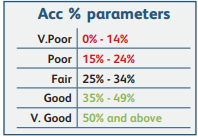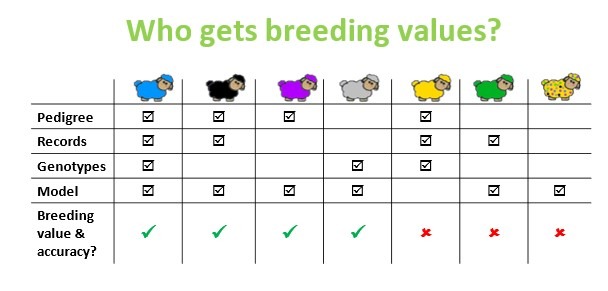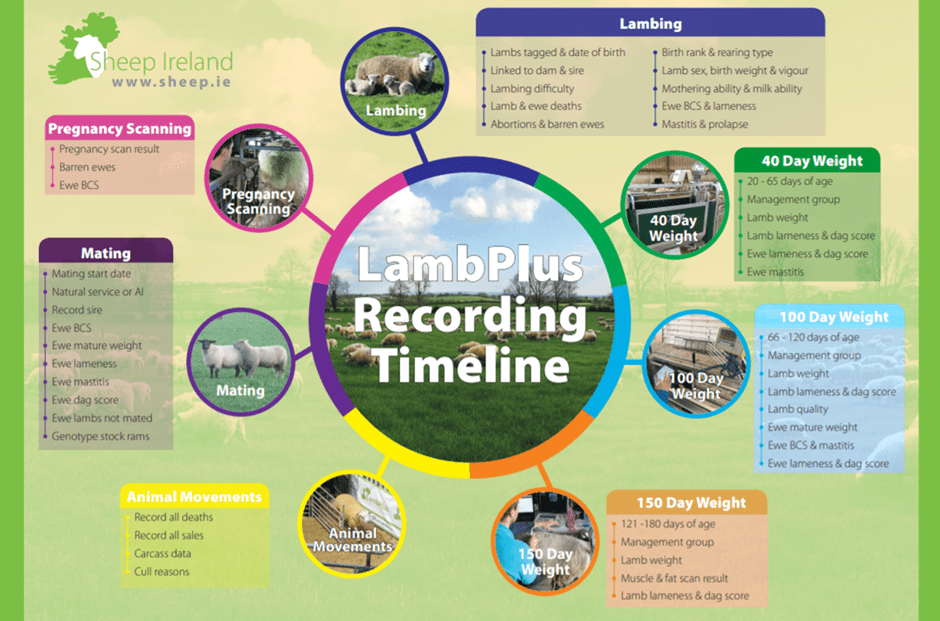LambPlus aims to collect as much performance information as possible for use in the Sheep Ireland genetic evaluations.
Breeders collect a wide range of data on their flock right across the year. A full list and description of the traits collected can be found here.
Weights:
There are 5 key weights recorded, namely, birth weight, 40-day weight, 100-day weight (weaning), 150-day weight (muscle and fat scanning) and mature weight.
Each of these weights will then work towards improving the flocks accuracy percentage (Acc %) and therefore making the evaluations reflect the performance of the animals on the ground more accurately.
Weighing lambs on time is crucial for the genetic evaluation and DQI.
DQI:
Each flock receives a flock Data Quality Index (DQI) score. This rates each flock on the quality, quantity and timeliness of the data submitted to Sheep Ireland over the previous year. Farmers are provided with feedback specific to their flock on which areas they should focus on to improve their data quality.
The DQI appears as a % figure on all €uroStar sale catalogues, and on the Sheep Ireland online breeder and ram search found at www.sheep.ie.
Management Groups:
Extremely important to the €uro-Star evaluation. Breeders need to highlight if there are different management groups on the farm. Animals that are managed under different conditions to other animals in the same flocks can record management groups, so they can be fairly accessed in the evaluation.
For example, if half the twin bearing ewes were lambed outdoors and the other half lambed indoors, this is likely to have an effect on ewe lambing performance and therefore needs to be accounted for by highlighting that these animals are in different management groups. If all sheep on the farm are being managed similarly, then management group recording can be ignored.
Accuracy:
Accuracy % is displayed for each index and trait and represents the amount of data behind that specific index. Where Accuracy % is Poor, a considerably lower emphasis should be placed on the evaluation, however where Accuracy % is Good or Very Good a considerable emphasis can be placed on the evaluation when making a breeding decision.
The more information that is available for an animal and its bloodline, the higher its accuracy % will be. Higher accuracy %, results in more dependable €uroStar evaluations. This figure indicates more precisely where the animals rank within the breed.
Genotyping provides more accurate estimates of breeding values . Genotyping an animal will increase index accuracy by 15 to 20%.

Data collection purposes. Which data impacts on the Evaluation and on the DQI?

Which data is needed for getting Breeding values and Accuracy while running the genetic evaluations model?


